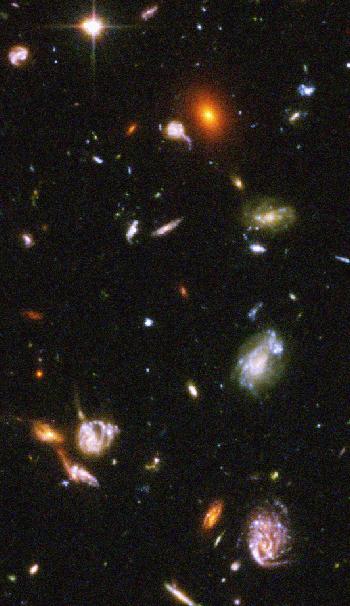The Stars ||
News ||
About Stars | Nearest Stars | Big Stars | Special Stars | Exoplanets | Prototype Stars || Constellations || Galaxies || Planets | Moons | Solar System || Convert Values || Stellar Records
|| Imprint & Privacy
Anzeige
About Stars: GalaxiesStars gather in galaxies. These could be similar to our Milky Way or completely different. Galaxies contain between a few millions and several thousand billions of stars, are many thousands light-years big and millions of light-years away from each other. Apart from stars they contain interstellar nebulae made of gas and dust.The smallest are the irregular galaxies (e.g. Large Magellanic Cloud) without a particular shape. Many of them are very active starburst galaxies. Spiral galaxies (e.g. the Andromeda Nebula) and barred spirals (e.g. NGC 613) are the standard models in the universe. The biggest are the elliptical galaxies (e.g. Virgo A), which supposedly evolved through the melting of other galaxies. They contain almost no interstellar matter anymore. Many galaxies are surrounded by numerous globular clusters. By the way, visible matter is only a small part of the mass and size of a galaxy. Much more is made of dark matter and dark energy, from which only little is known. In the cores of larger galaxies often supermassive black holes can be found. When much matter streams in there, bright radiation is emitted. These objects are called quasars. Quasars known to us are very far away and appear as a dot. So they are QUASi stellAR (therefore the name). Galaxies themselves gather in clusters and those again in superclusters, which are the largest structures in the universe. Example: Whirlpool Galaxy Back: About Stars | Continue: Cosmology |

An extract from the Hubble Ultra Deep Field, HUDF Photo: Nasa, Hubble Telescope |
|
Astronomical articles released under Creative Commons: Imprint & Privacy This site in German: Sterne und Planeten Astronomy: Stars & Planets | © Jumk.de Webprojects Images of Chemical Elements |